
Top 10 Wild Foods to Forage
Summer is a fantastic time to forage for wild foods.
Not only is the warm weather a delightful treat, but there are also plenty of delicious wild edibles ready to be harvested. So if you’re looking to forage for wild foods from July to September and looking for some inspiration, then you’ve come to the right place. This post takes a look at our top 10 wild foods to forage in summer. A concise round up of the tasty treats available to forage across the UK, from mushrooms to bilberries.
July to September is a good time for wild fruits, such as black raspberries and wild plums. Wild greens are still plentiful, such as purslane and lamb’s quarters (just look for the more tender, newer growth). Young milkweed pods are developing, which are a delicious treat when they’re still tiny. We’re at the start of prime mushroom season for many favourite varieties of wild mushrooms, as well.
If you’re new to foraging, head out with an experienced forager your first few times or stick to plants that you already know or can easily identify. There are wonderful books that can help you ID wild edibles, and there are also dozens of Facebook groups filled with foragers who are happy to help ID photos of plants you’re unsure about. The UK is abundant with wild edibles. Below features just some of my favourite wild foods to forage in summer.
1. Chickweed (Stellaria media)
Image source: Countryfile
Chickweed is packed full of vitamins and minerals with cleansing and healing properties. This often-overlooked weed is seriously underrated. Whip some up into yummy homemade pesto, or use to liven up fish or chicken. Take careful when out hunting for this gem though – it can be confused with inedible Speedwell, Spurge and Scarlet Pimpernel, as they share the same habitat. Look out for chickweeds’ distinctive small star-like white flowers. To eat, wash thoroughly and only use the green parts of the plant.
2. Elderflower (Sambucus nigra)
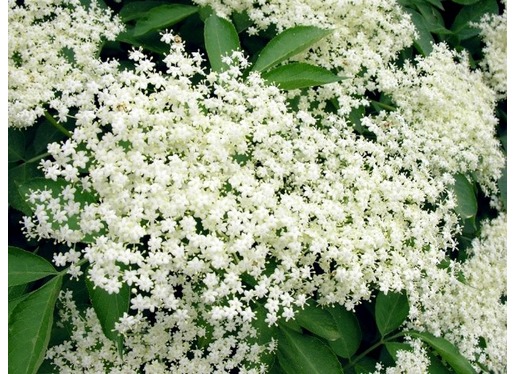
Image source: Countryfile
Early July is the end of the season for Elderflower, which is perfect for flavouring delicious cordials, wine, sorbets and ice creams. The tiny white flowers are easy to spot in large bunches in almost every hedgerow, but make sure you pick them a distance away from roads to avoid polluted plants.
3. Wood Sorrel (Oxalis acetosella)
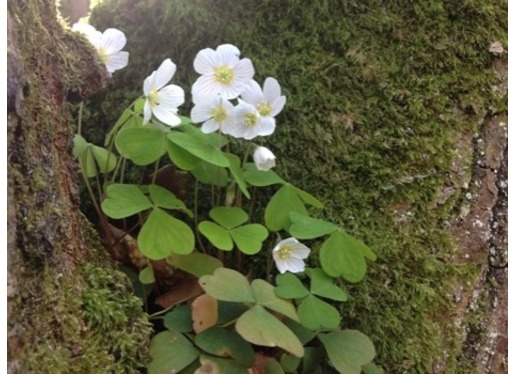
Image source: wildfooduk.com
Wood Sorrel can be found on woodland floors and hedgerows almost anywhere damp and shady. It can be easily identified by it’s three heart shaped leaves with a perpendicular stem descending from the middle, a little like clover. The leaves ‘wilt’ or close at night or if conditions are harsh. The leaves have a sharp and sour taste, something like apple peel and lemon and is very pleasant. Wood Sorrel is great for adding to salads.
4. Pennywort (Centella asiatica)
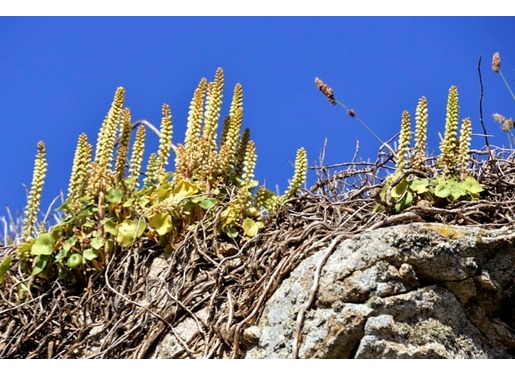
Image source: Countryfile
Most likely found in old stonewalls and crevices in rocks, Pennywort is hard to mistake. With round leaves and spikes of green and pink on its stem, the plant is sometimes called Navelwort, due to the small indentation at its centre. Pennywort is best found after some rain when its at its most juicy – perfect for a summer salad or adding crunch to a picnic sandwich.
5. Chanterelles (Cantharellus cibarius)
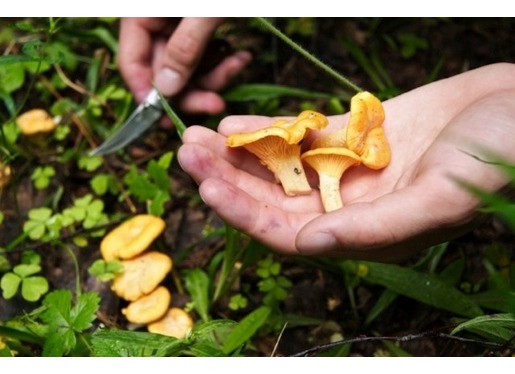
Image source: Countryfile
Head to pine and mixed woodlandto find this delightful mushroom, golden yolk-like in colour. The wavy shape distinguishes it from the false Chanterelle, which smells and looks like a more typical mushroom but just happens to be a similar colour. The Chanterelle has a peppery, slightly fruity taste and smells mildly of apricots. Cook in a little oil or butter and add to pasta or soak in vodka for a very distinctive liqueur.
Note: People looking to gather wild mushrooms should be aware of the dangers that mushrooms can pose. Correctly identifying the mushrooms that are safe to pick and eat is the key to ensuring that foraging is good fun and does not endanger health. When foraging for wild fungi, it’s always advisable to go with a seasoned expert.
6. Fat Hen (Chenopodium album)
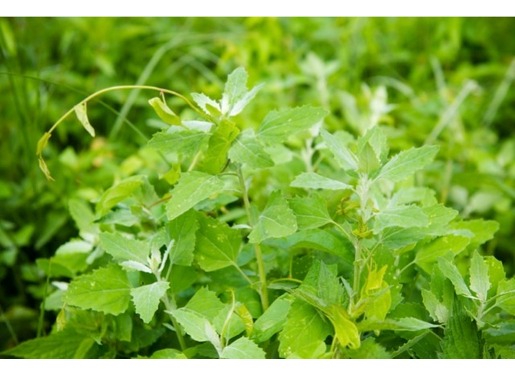 -L]
-L]
Image source: Countryfile
These large weeds can be the bane of some gardener’s lives, shading out most other plants, but instead of just throwing pesky weeds away, wreak revenge by eating them instead! Fat Hen is identifiable from its triangular leaves with a coating of faint white hairs. It tastes very similar to spinach and can cooked it in the same way.
7. Blackberries (Rubus fruticosus)
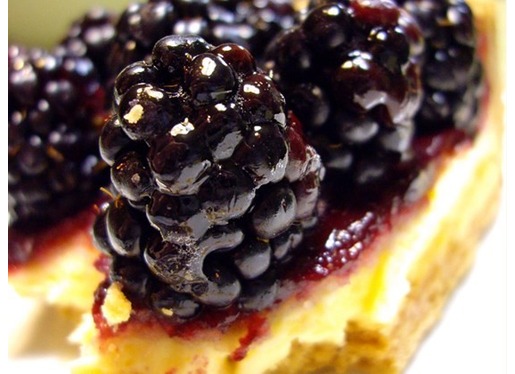
Image Source: Woodland Trust
Bramble is a common plant and can often be seen in woodland, hedges and scrub throughout the UK. Blackberry picking is a favourite pastime for many children and families around the UK. The fruits are used for pies, crumbles, jams, wine and vinegar. Blackberries are normally at their best at the end of August to September. By October the damp weather will have soiled many of the crops.
7. Bilberries (Vaccinium myrtillus)
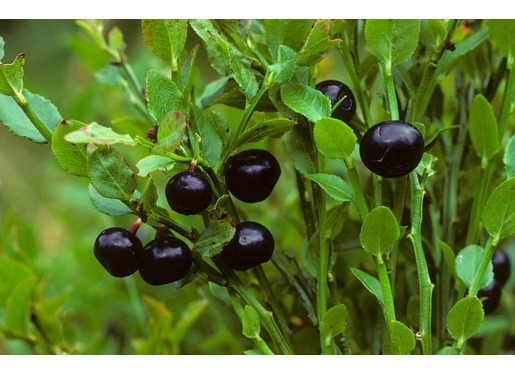
Image source: Plantlife
Bilberries can be found between July and September and are a British equivalent of the Blueberry. Depending on where you live in the country it may also be called blaeberry, whortleberry, whinberry or wild blueberry. Bilberry bushes are low-growing, deciduous and extremely abundant on acid soils in habitats as diverse as heaths, moors and woodlands of birch, oak or conifers. They are delicious, sweet and great for eating straight after being picked. You can also use bilberries with a little stock and red wine to make sauce for game; in pies, tarts and cakes. Much like Blackberries, Bilberries are normally at their best at from August to September.
8. Red Clover (Trifolium pratense)
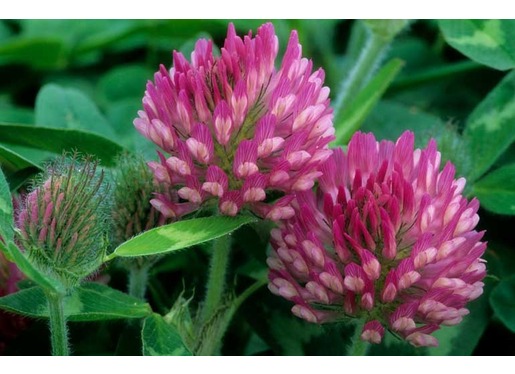
Image source: Plantlife
The Red Clover’s most defining characteristics are the purple-red flower and the v-shaped stripe of white across the green leaves. The flower has a rounded head. The flowers bloom generally from April through September. Red Clovers can be found in fields, thickets and on roadsides. Clovers can be used in a salad, as a cooked green, ground to flour, or blended with another tea. Clover has is being used for many forms of medicine and is high in protein. The most common things to eat on the Clover are the flowerheads and the leaves, but are easier to eat if soaked for about an hour or boiled.
9. Jack By The Hedge (Alliaria Petiolata)
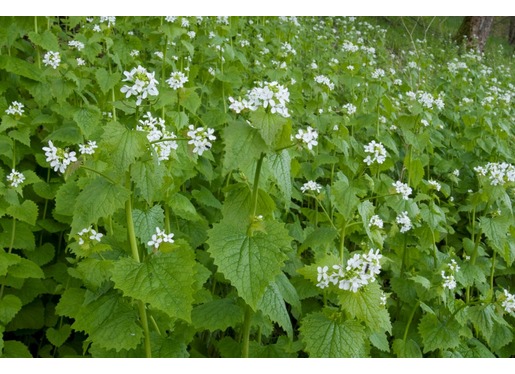
Image source: Huffington Post
This plant is totally underrated and a personal favourite. A lot of people know what ramsons / wild garlic are but don’t know this hedgerow plant. The garlic taste is much more subtle than wild garlic and goes well in sandwiches or stuffed in a fish. It grows from early spring through until Autumn. It is biennial and grows lots of leaves in its first year and goes to seed in its second year. In the UK you will find growing along hedge lines. Every part of the plant is edible. The roots are the hottest part and can be loosely compared to horse radish and taste amazing pickled. The leaves are best when they are young and fresh at the beginning of spring, as the season goes on the leaves become more mustardy and bitter.
10. Horse Mushroom (Agaricus arvensis)
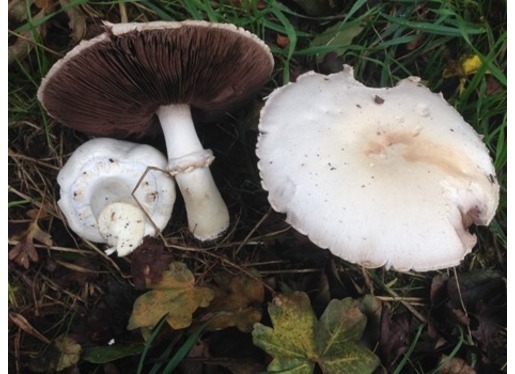
Image source: Wildfooduk.com
This has to be one of my favourite mushrooms. A great mushroom with a rich, strong taste and as it can grow so large and in rings, usually provides quite a feast. It can be found growing in pastures, meadows, lawns, road verges and parks, often growing in rings. The caps are white, sometimes discoloured grey/brown and can be scaley or smooth. The stem is stout with a large double ring. When very young the gills are almost white but quickly turn from pink/grey to brown in more mature specimens. The gills are dense and crowded. While still joined to unopened caps, the gills look a little like a ‘cog wheel’. The smell is mushroomy with an almost aniseed undercurrent.
As mentioned above, it is advisable to forage for wild mushrooms with a seasoned expert to correctly identify mushrooms that are safe to pick and eat.
The UK is abundant with wild edible weeds, plants, mushrooms and berries. The list above hardly scratches the surface but is just a few of the common wild edibles I like to enjoy during the summer months in the UK. I hope this article on my top 10 wild foods to forage in summer has been of interest to you. If you have some other favourite wild edibles, then please do leave a comment below!
Featured image: ‘Horse mushroom (Agaricus arvensis)’ by Rictor Norton & David Allen from London, UK – Commons.Wikimedia. License CC BY 2.0. Image cropped.
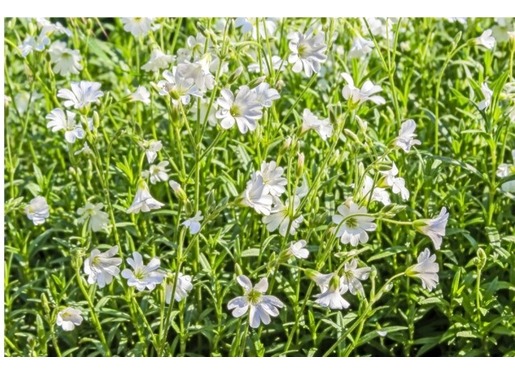
Hopfully one day lol